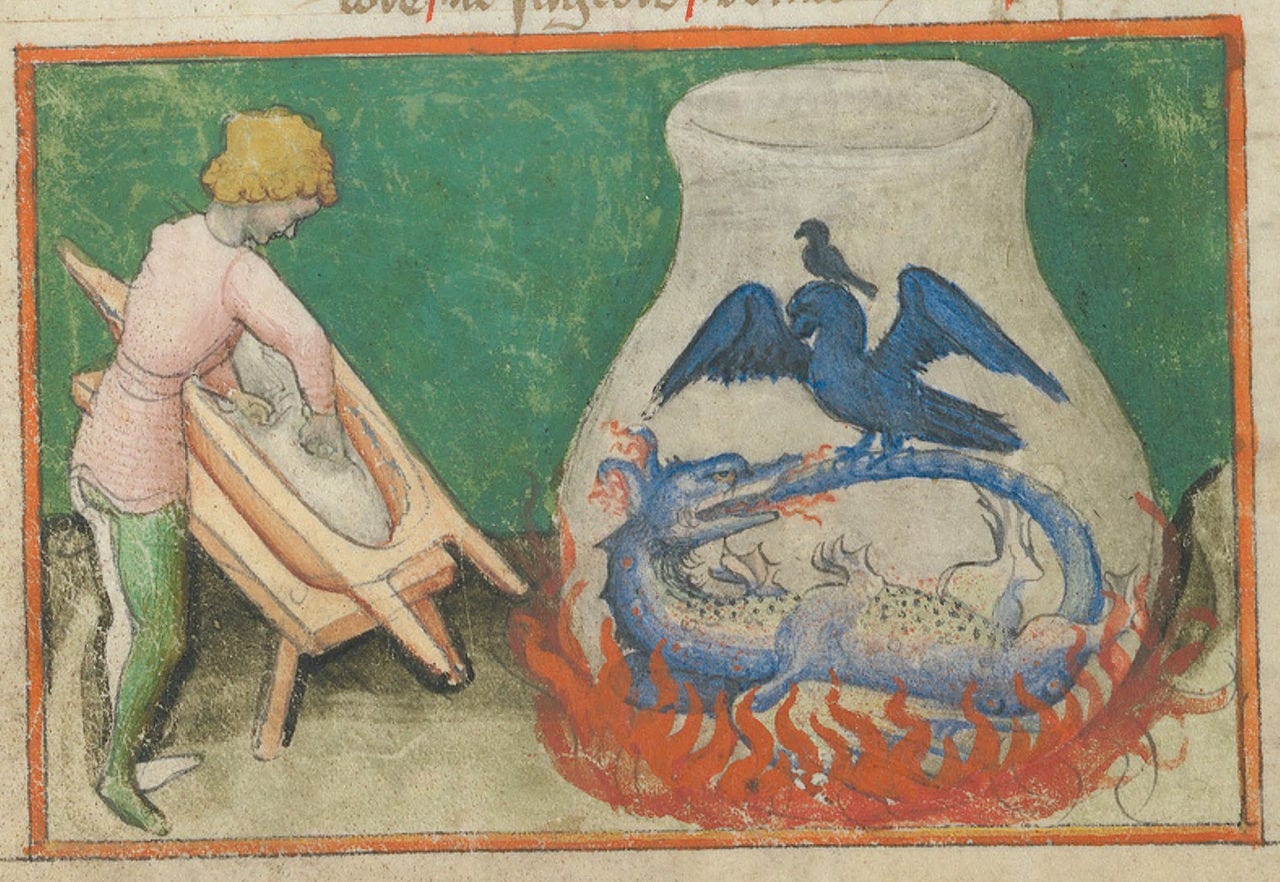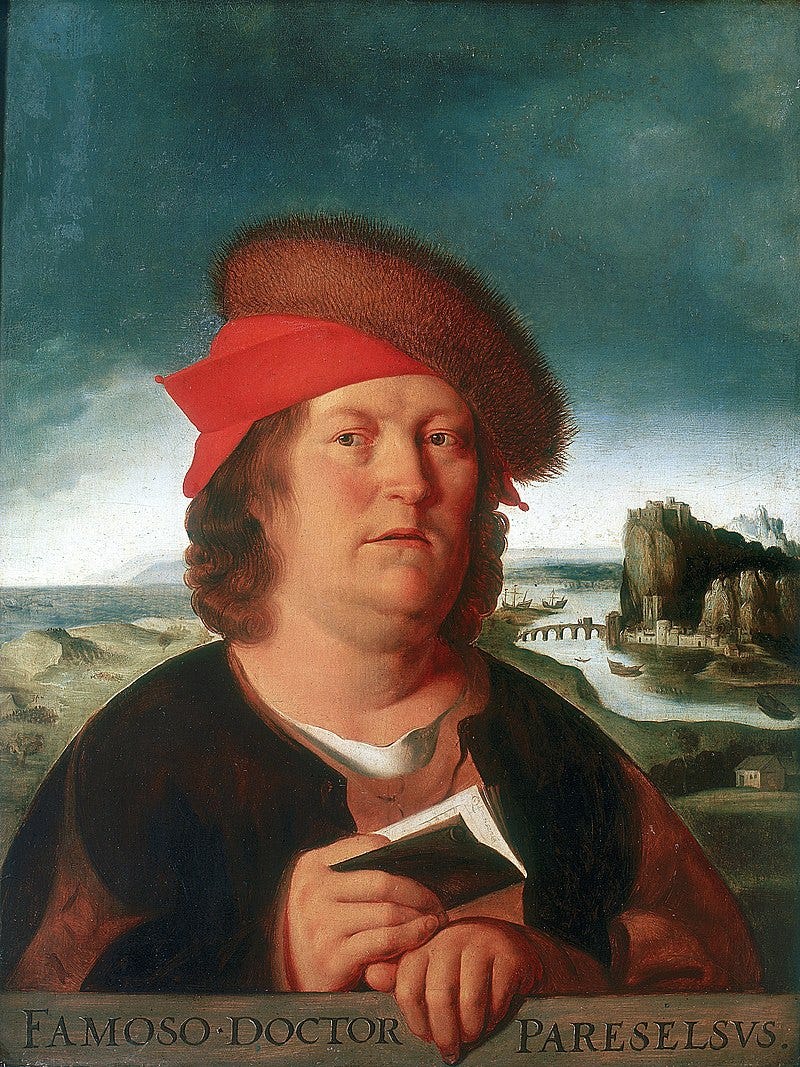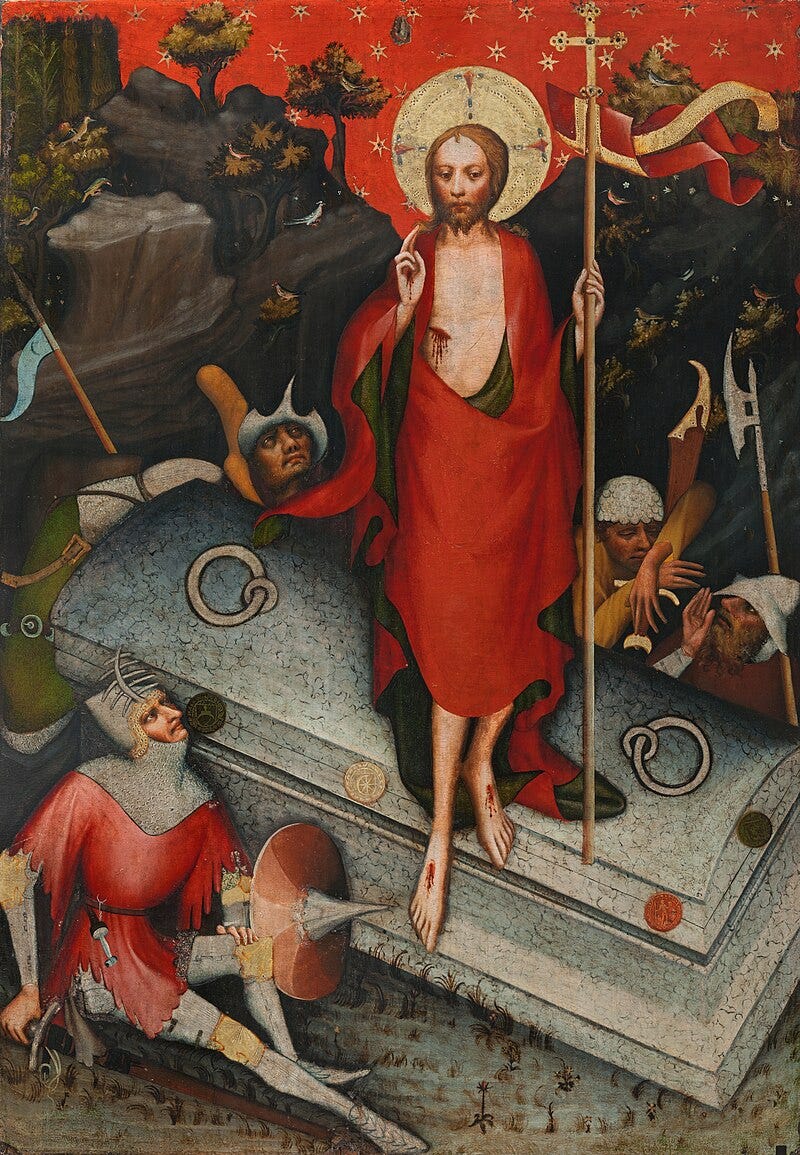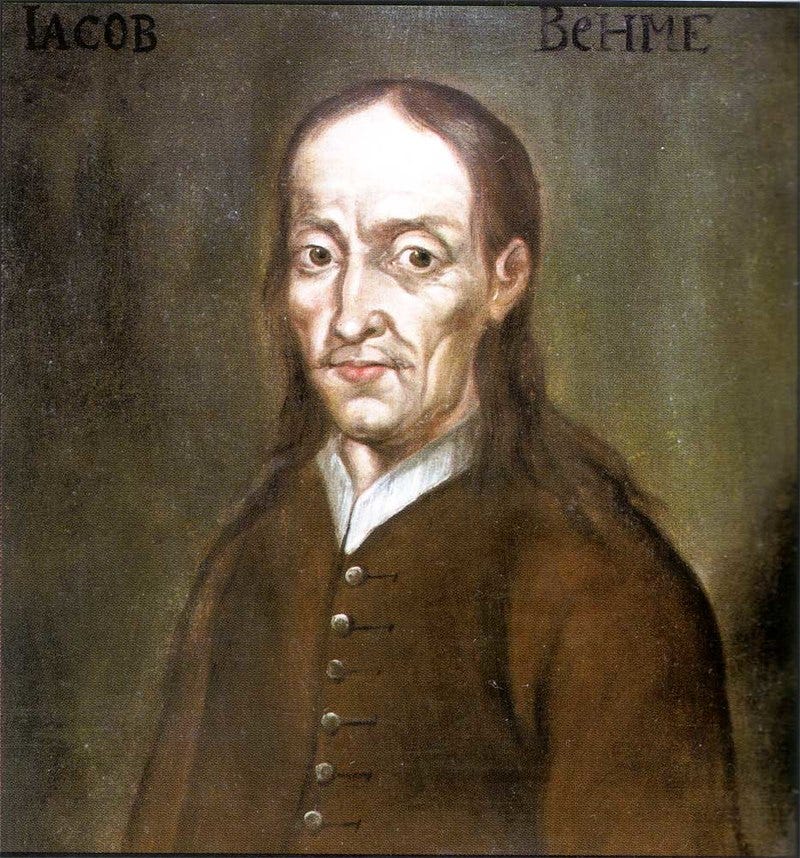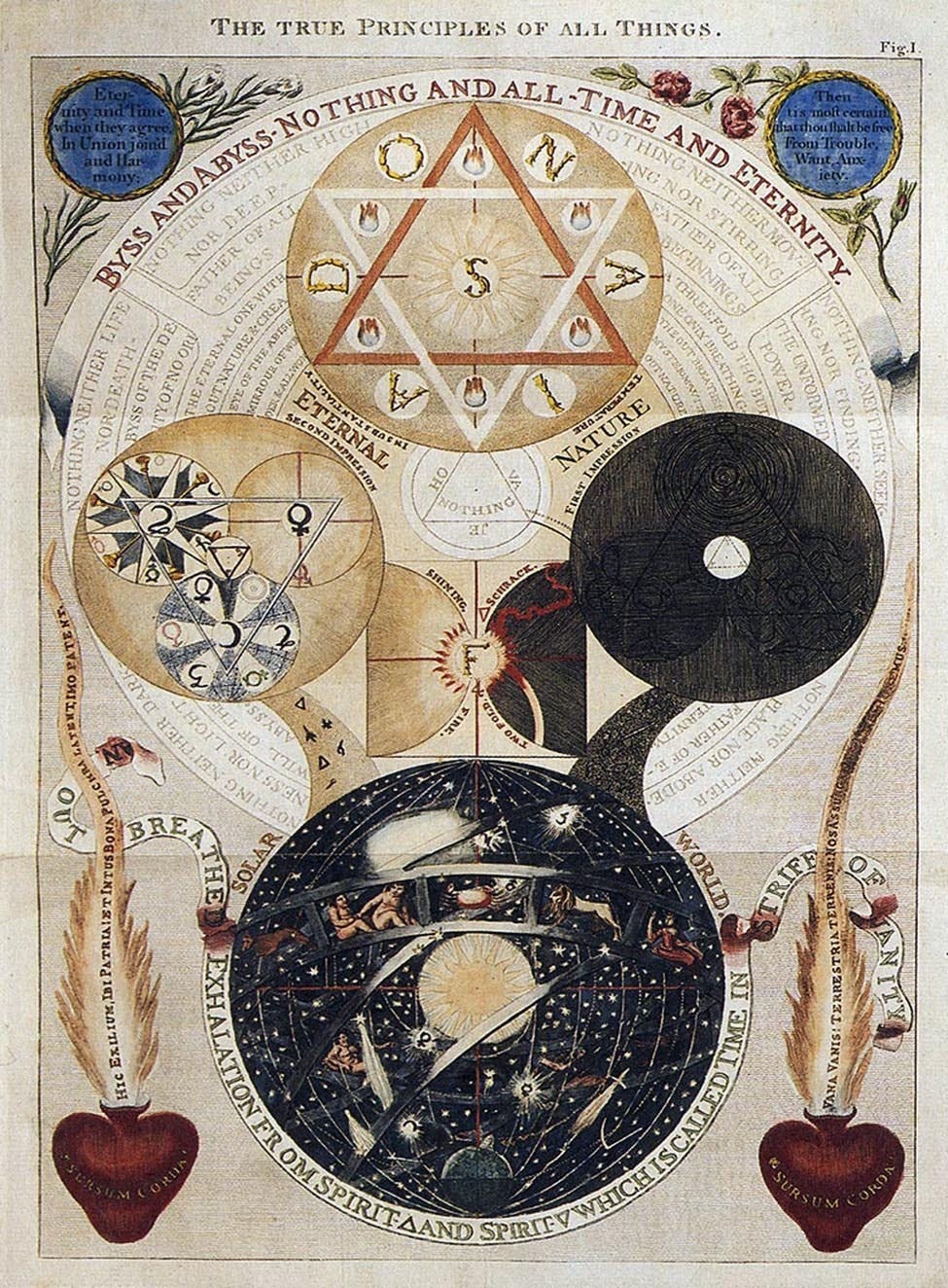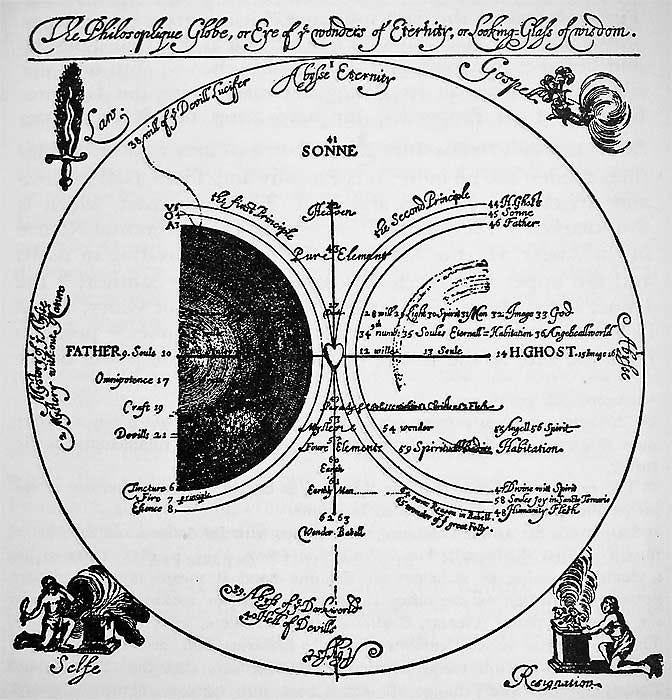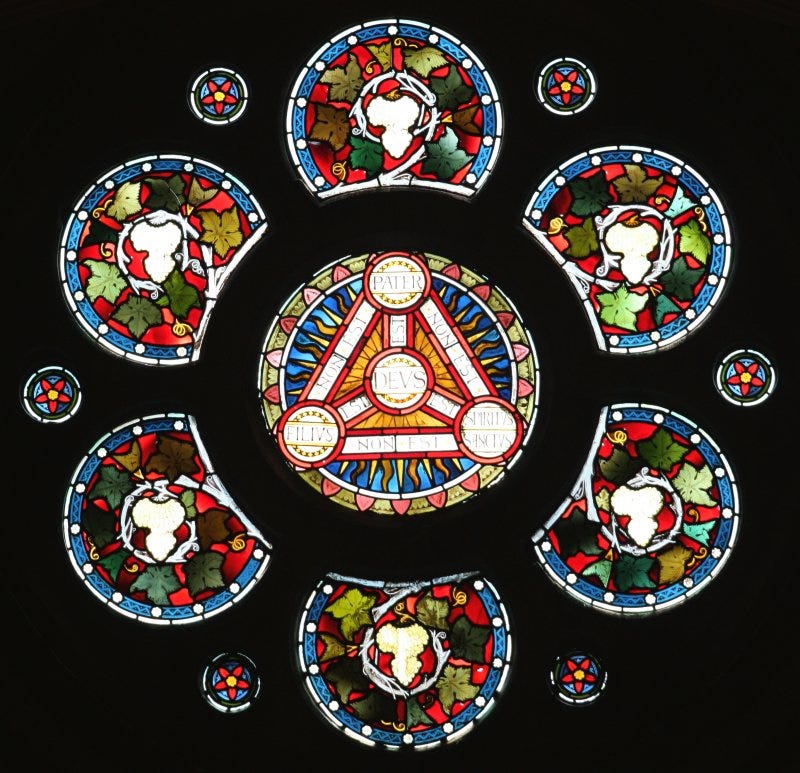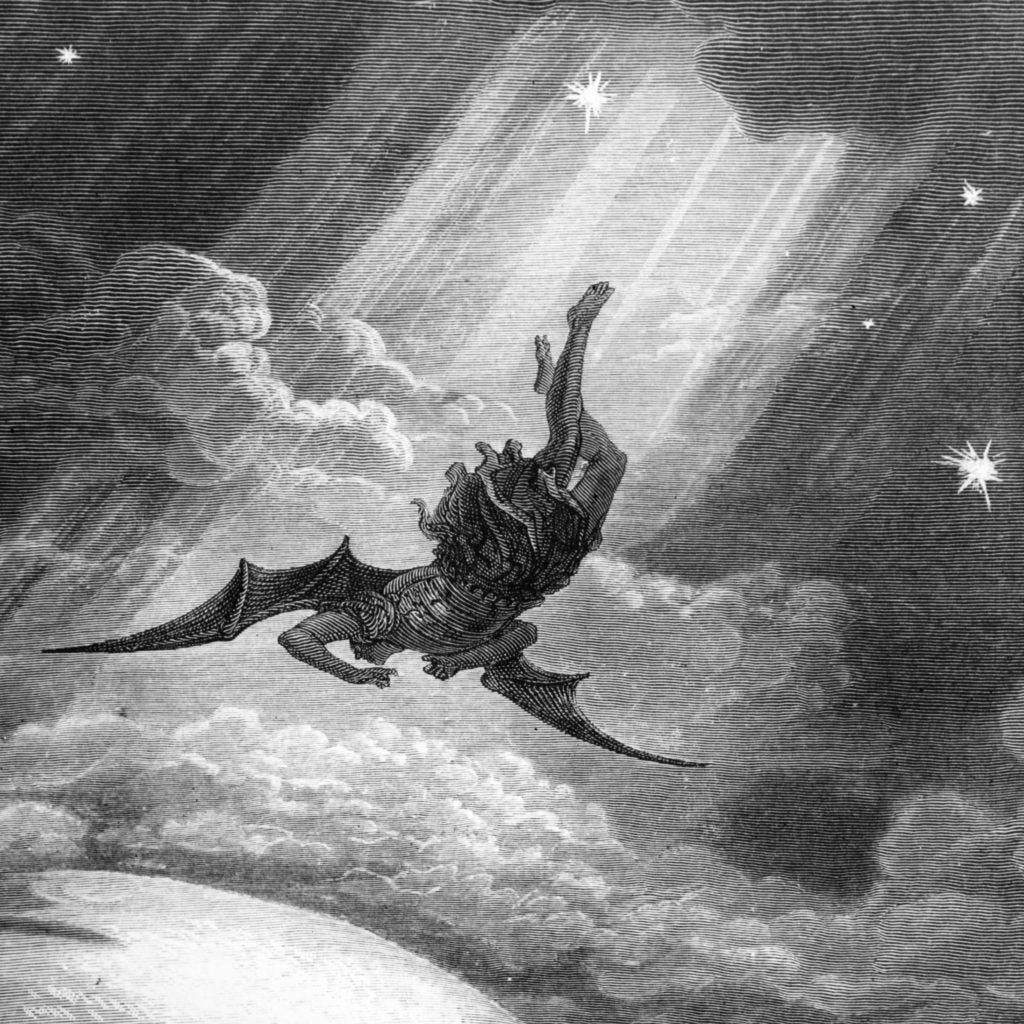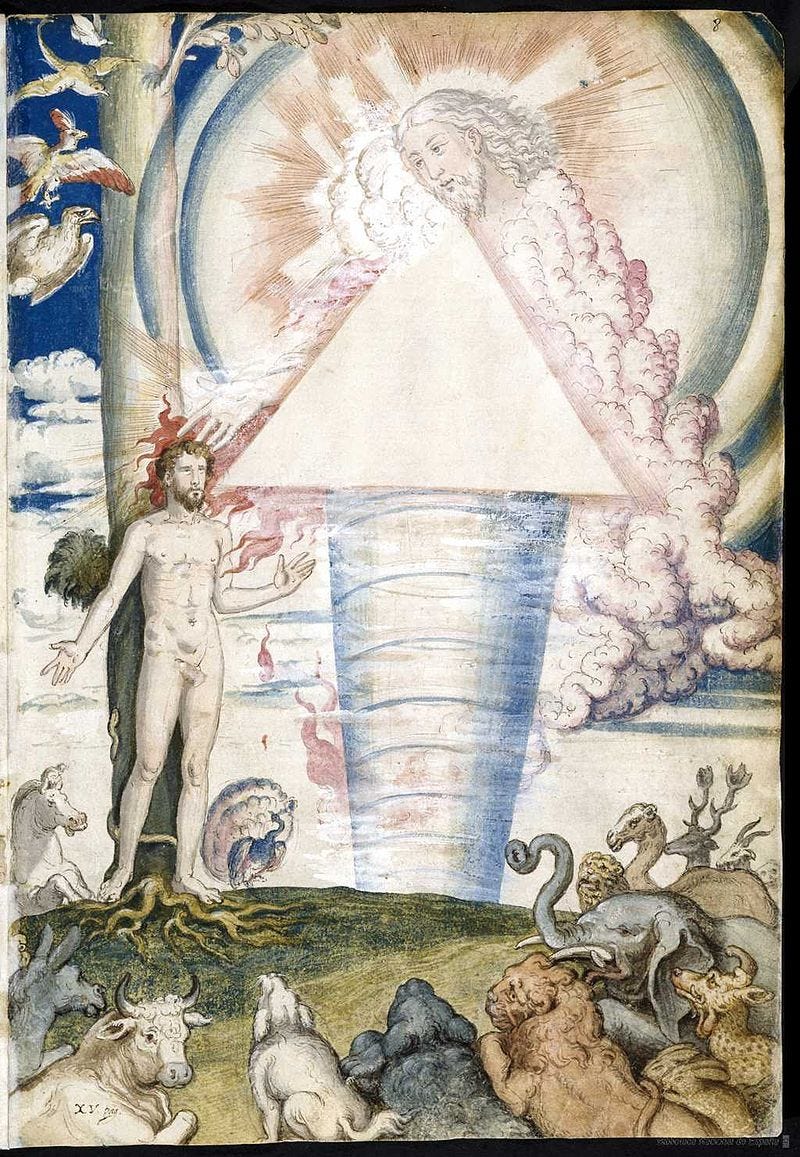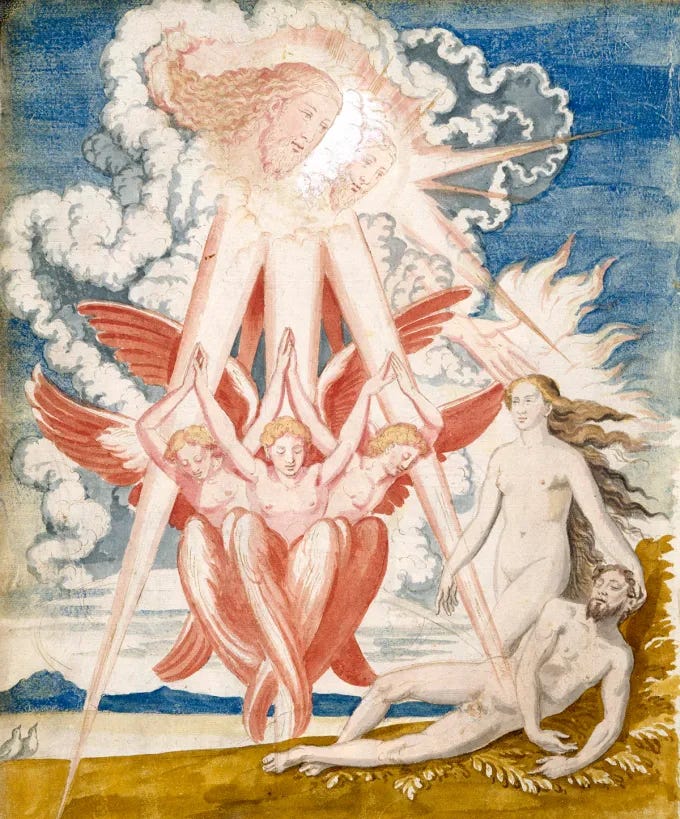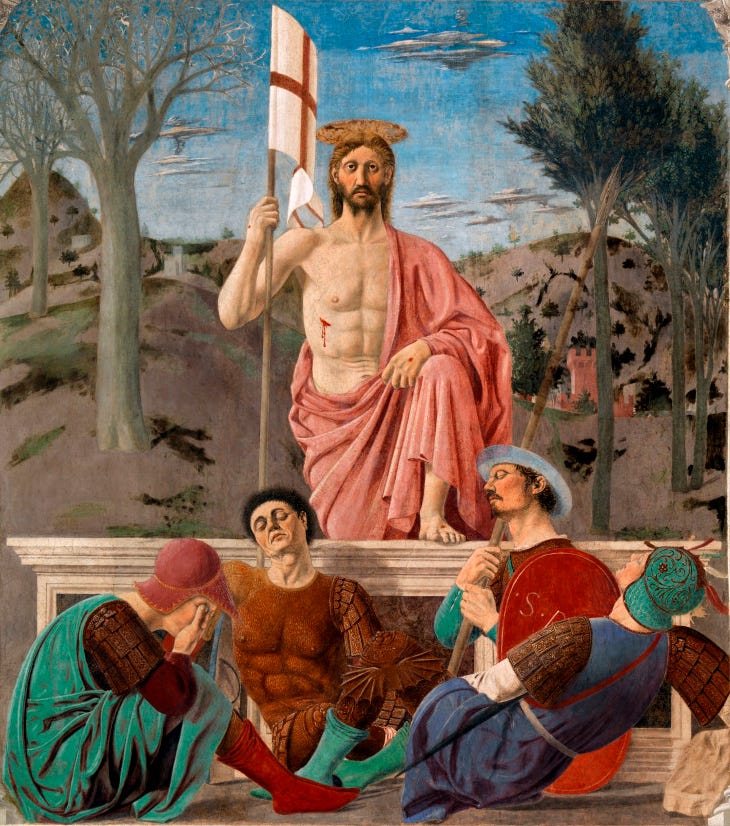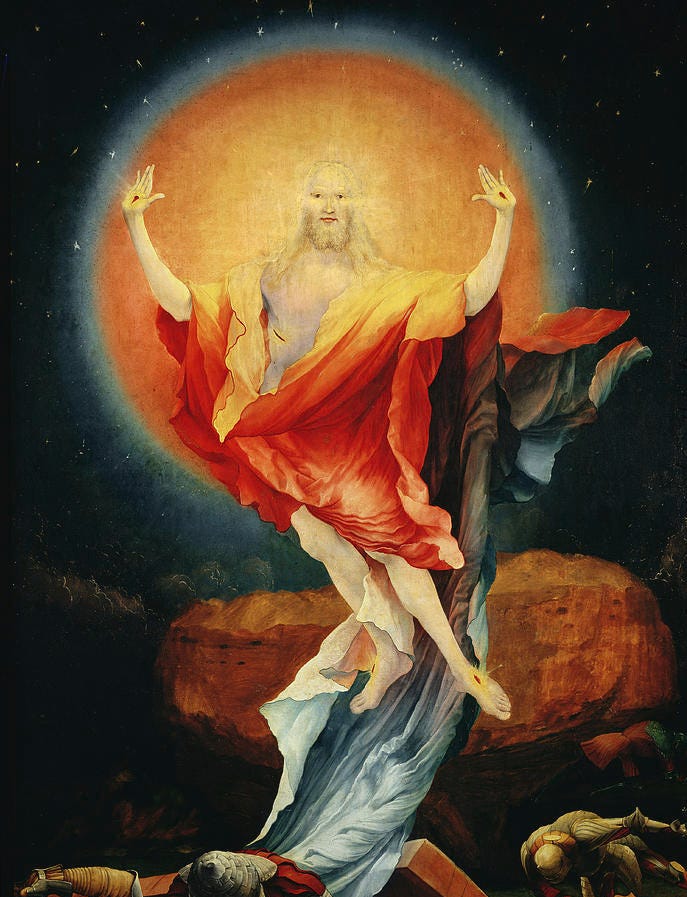The Cosmogony of Jakob Böhme
A brief overview of the universe as outlined by the shoemaker from Görlitz.
This is my first article that deals squarely with one thinker. As of the finishing of this article I started looking into the life, and particularly the cosmogony of Jakob Böhme around five days prior. Most of my historical articles covered metaphysics or philosophy to an extent where they leave an imprint in the behaviour and mannerisms of the persons related to them. The philosophy of the Hellenic mystery-cults in tandem with the general character of these cults. Chinese philosophy and how it related to Chinese political notions, and so on. The content of his cosmology and metaphysics is the bulk of this article and not particularly the world surrounding him at the time.
Also muß der Tod eine Ursache des Lebens seyn.—
”And so death must be a cause of life.”
Jakob Böhme, De signatura rerum (8;7)
CHAPTERS:
Fundaments of European Alchemy
i. Transmutation of Gold
ii. As a Science
iii. The History of Alchemy
iv. Philosopher’s Stone and ParacelsusLife and Writings
A Cosmological Picture
i. The Umgrund
ii. The Seven Qualities
iii. The Third Principle
iv. The Trinity and the Qualitiesv. Satanic Inversion
vi. The Creation and Fall of Man
vii. Christ and His Eternal Incarnation
Influence and Reception
Fundaments of European Alchemy
The context of Böhme’s thought was the developing Germanic alchemical tradition, one might consider it emblematic of the northern Renaissance and the Reformation, as Martin Luther would approve of the practice of alchemy, despite its foreign roots in both the Hermetic and Islamic sources it came from. The discipline of alchemy itself occupies a curious space, it being considered variously at the same time a science, religious mysticism, or simply magic. In late medieval Europe being a potential career-path. One might be lead to question how, if it is a pseudo-science as perceived today, could any of its practitioners ever procure employment if it was fated to never produce results?
I. Transmutation of Gold
However metallurgists, gem-cutters, and doctors (beginning with Paracelsus) themselves were all in-part alchemists, what was uniquely alchemical and not yet separated into an empirical science or discipline of work was intertwined with all such crafts. Yet alchemy does also have its defenders, and many esteemed minds have spoken of the veracity of the transmutation of gold, the highest goal in alchemy behind the Magnum Opus,1 the effort to turn the base metals (lead, iron, tin) into noble ones like gold or silver.
Those assuming that all alchemists were of unsound mentality would be forced to put in this category nearly all the philosophers and scientists of the ancient and mediaeval worlds. Emperors, princes, priests, and common townsfolk have witnessed the apparent miracle of metallic metamorphosis. In the face of existing testimony, anyone is privileged to remain unconvinced, but the scoffer elects to ignore evidence worthy of respectful consideration.
—Manly P. Hall, The Secret Teachings of All Ages, Ch. XXXIV
Hall goes on to list Thomas Norton, Isaac of Holland, Basil Valentine, Jean de Meung, Roger Bacon, Albert Magnus, Quarcetanus Gerber, Paracelsus (more on him later), Nicholas Flammel, John Frederick Helvetius, Raymond Lully, Alexander Sethon, Michael Sendivogius, Count Bernard of Treviso, Sir George Ripley, Pico della Mirandolla, John Dee, Henry Khunrath, Michael Maier, Thomas Vaughan, J. B. von Helmont, John Heydon, Lascaris, Thomas Charnock, Synesius (Bishop of Ptolemais), Morieu, the Comte di Cagliostro, and the Comte de St.-Germain as minds who considered alchemy worthy of study and far from a sham.
II. Scientific and Spiritual Alchemy
“The Hermetic Science, like all real sciences, is mathematically demonstrable. Its results, even material, are as rigorous as that of a correct equation. The Hermetic Gold is not only a true dogma, a light without Shadow, a Truth without alloy of falsehood; it is also a material gold, real, pure, the most precious that can be found in the mines of the earth.”
—Albert Pike, 33rd degree Mason
The art itself when divorced from a spiritual dimension that came about later (nonetheless, there being no lay and spiritual divide in daily life at this point in time, elements of alchemy are bound to be associated with the divine) in the late and high-medieval ages, is exactly that, an art or a science, and not yet a form of mysticism. A spiritual alchemy as yet stands undeveloped. Alchemy is said to have had its beginnings in Hellenistic Egypt, in Alexandria. The first historically attested alchemical author, Zosimos of Panopolis, lived in the 4th century A.D., and serves as a hagiographical writer on previous alchemists, such as Mary the Jewess or, yet at this stage matter and spirit are thoroughly interwoven.

The Emperor Diocletian would forbid the art of alchemy and persecute its practitioners, and the West would not come upon this art until much later. The discipline would survive in the East and permeate into the Islamic world, whereby alchemical knowledge was blended with the works of philosophers such as Aristotle, and some alchemical treatises were mistakenly attributed to Christendom’s most adored philosopher. Alchemy thus has a concrete date of introduction (or re-introduction) into Europe, that being February 11th, 1144, when a translation of Khalid ibn Yazid’s ‘Book on the Composition of Alchemy’2 (Liber de compositione alchemiae) was published by Robert of Chester.
And so, we can take the interval of time between the middle of the 12th century (the introduction of alchemy into Western Europe) and the middle of the 16th century (the time of Paracelsus and Weigel) as a purely scientific alchemy, later to be remade in a spiritual fashion by the two aforementioned men.
III. The History of Alchemy
As for a general history of the discipline, it had its beginnings in Hellenistic Egypt, the distant ancestor to alchemy being ancient Egyptian metallurgy. The Emperor Diocletian had ordered the destruction of alchemical works and persecution of alchemists, preventing thereby the craft’s entrance into early medieval Europe. It did, however, survive in the east and entered the Islamic world, and was subsequently reintroduced into Europe around the 12th Century as a science, not a spiritual tradition.
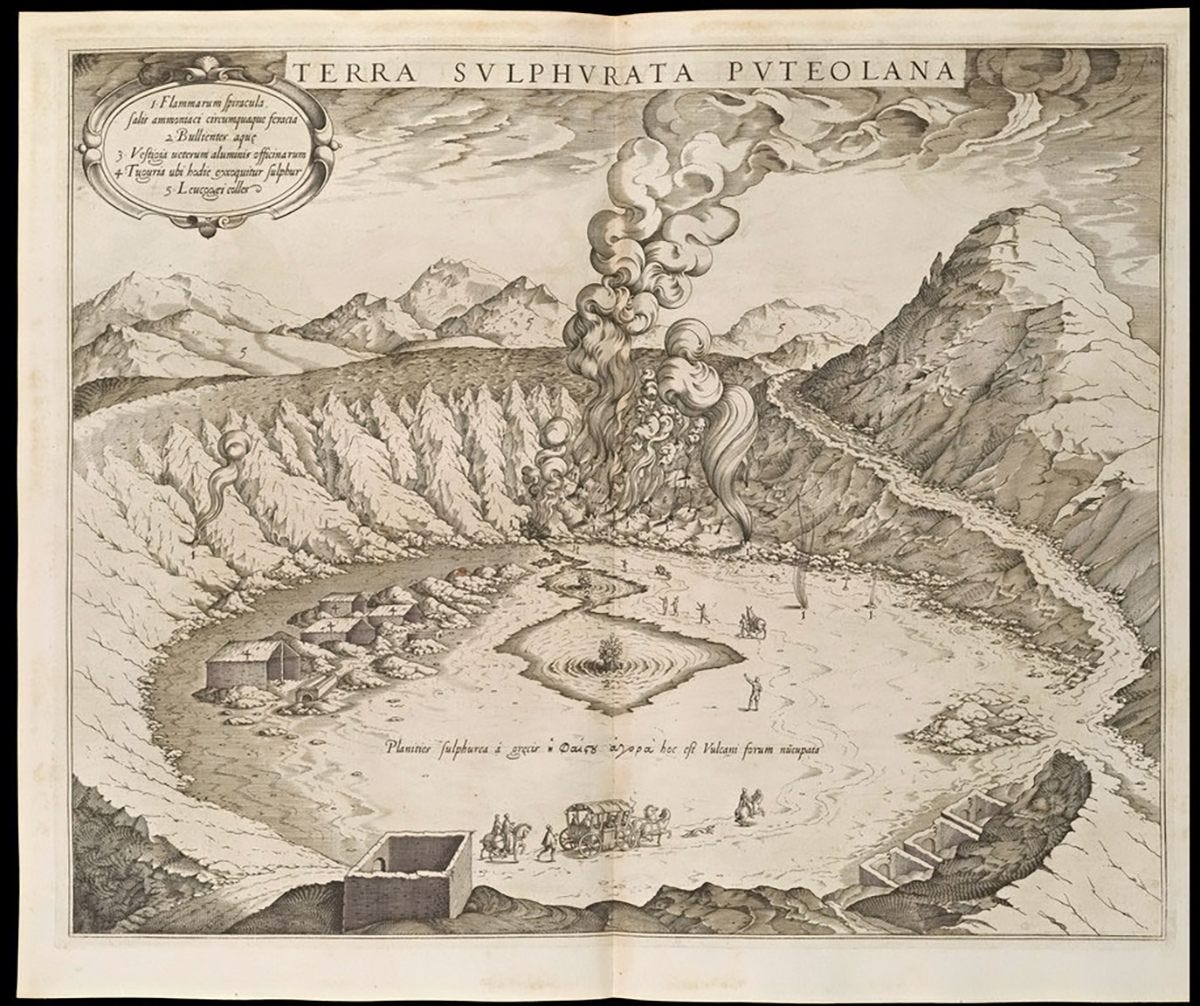
The popular conception of alchemy as a uniquely spiritual (or psychological) art and not a craft that sought to produce literal results has been largely popularized by Mircea Eliade and Carl Jung in the 20th Century. Independent of Jakob Böhme and his usage of alchemical imagery, metaphor, allegory, and allusions that would endure long after his death, there is largely no European tradition of spiritual alchemy to speak of, much less before the 16th Century. Without him it stands, at most, as a rudimentary precursor to chemistry. Another root of alchemy as a spiritual discipline or one meant to transform the human being rather than metals and elements are Hermetic texts introduced into Europe during the Renaissance, a little under a century prior to Böhme’s birth.
IV. Philosopher’s Stone and Paracelsus
But independent of and preceding Böhme, alchemical treatises were frequently littered with religious and fantastical imagery. The reason for this being that since alchemy is concerned with the transformations of matter and the reactions that such experimentation produces, there is something of the divine, creative act in every instance of alchemy. One is directly operating on the fundaments of nature made by the living God.
The trinity of mercury (☿), sulphur (🜍), and salt (🜔) conceived by Paracelsus in his Opus Paramirum (1531) as a medicinal application of chemicals on the basis of the tria prima (‘the three primes’) argued that due to the nature of each element (sulphur, combustible and energetic; mercury, fluid and changeable; salt, solid and lacking energy) they, in specific proportions, hold the remedy to every illness. Additionally, Paracelsus and his followers drew a corresponding human faculty to the three elements: salt as the physical body (structure), sulphur as soul (energy), and mercury as spirit (knowledge). Around 1550 meanwhile, the fabled Philosopher’s Stone, a substance which had the ability to transform base metals such as lead or iron into noble ones like silver or gold, came to be identified for the first time in the Rosarium philosophorum (‘Rosary of the Philosophers’) as Christ himself, or called lapis-Christus in nobis (‘the Christ-stone in us’), a direct and immediate presence of Christ in the human being (associated also with Baptism and the Eucharist) that constituted an ‘element’ within the nature of the human. This advent would bear a profound influence on Böhme’s Christology.

The Philosopher’s Stone, mind you, was seen as a real and existent substance, although still holding a somewhat legendary status, and for its transformative power of making gold out of lead or tin, and curing all illness, the mystical alchemists came to associate it with Christ Jesus who out of sin can procure salvation through grace.
Life and Writings
Jakob Böhme (Behmen in the common English spelling) was born on April 24th, 1575, in the village of Alt-Seidenberg near the city of Görlitz, to reasonably wealthy, albeit peasant, parents, themselves Lutheran, as the fourth of five children. At 14 he became an apprentice to a shoemaker at Seidenberg, and at this time also was exposed to the works of men like Paracelsus and Weigel (alchemists and mystics), he never received a formal education. At seventeen he left his apprenticeship and travelled around Germany as a journeyman of his profession, in 1592 (at 27) he returned to Seidenberg, and seven years later attained the rank of master of the craft and returned to Görlitz (1599). He married one Katarina the same year and had with her two daughters and four sons.
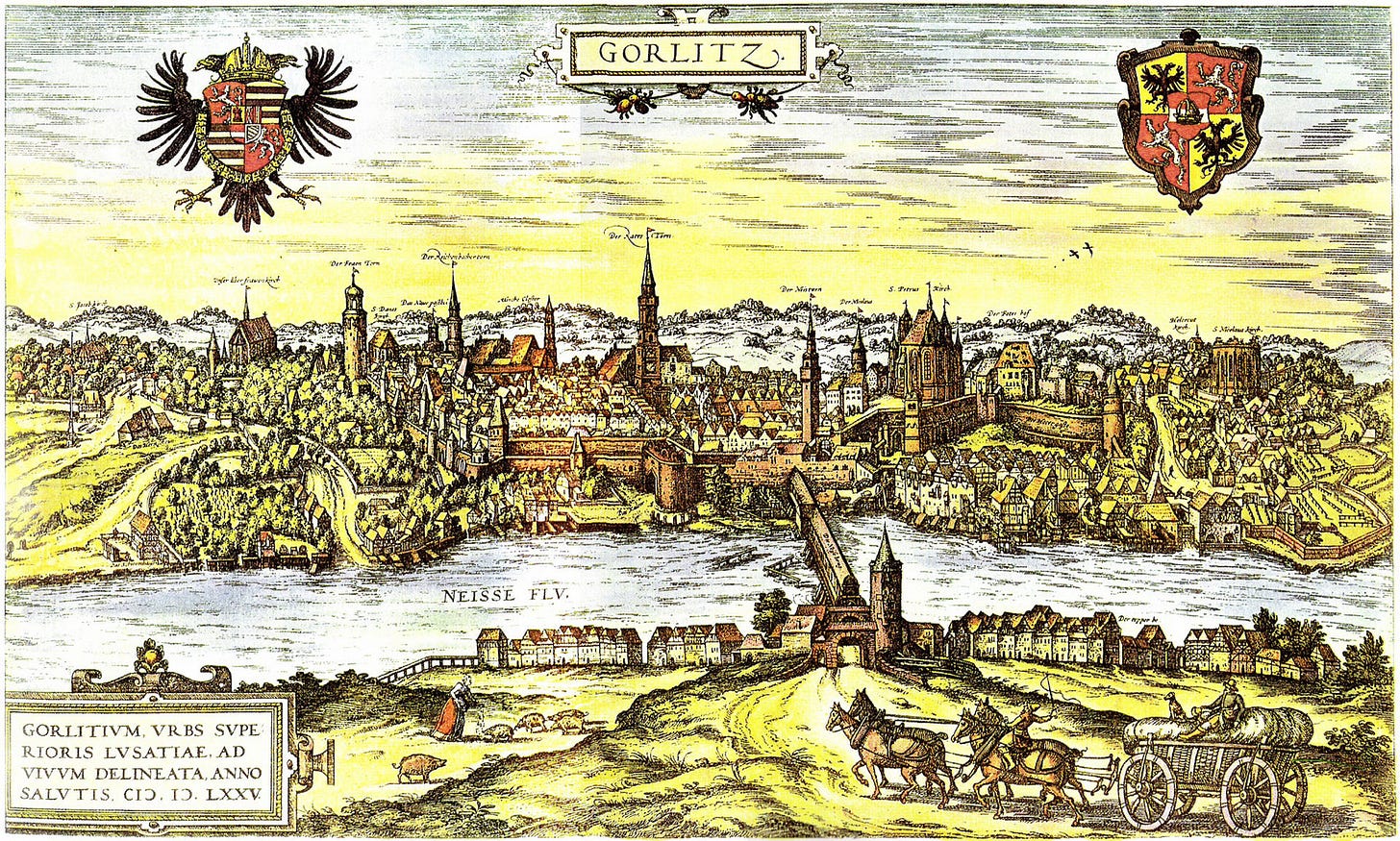
Maintaining his initial interests in the mystical and esoteric side of religion, Böhme joined the “Conventicle of God’s real servants,” a congregation organized by the mystic Martin Moller.3 Böhme is presumed through such congregations and gatherings to have met Abraham Behem, who would come to be something of a mentor to him, Behem being a scholar of Paracelsus, and close correspondent to Valentin Weigel.
In 1600 Böhme would come upon his first mystical experience, wherein focusing his vision on a pewter dish reflecting the sun’s rays, he came to understand the nature of the whole of existence; the origins of good and evil, the relation between God and man, the beginning of the world. Jakob continued his familial and work-life as normal, and in 1610 underwent a similar experience to the one ten years prior, and believed now that he had a special, divinely-ordained mission to outline this cosmogony that was revealed to him. Böhme sold his shoe-shop in 1610, bought a new home, and stopped shoemaking in 1613, instead taking up the sale of woollen gloves, frequently travelling to Prague to sell his wares.
A year earlier, in 1612, Böhme began writing his first book, Aurora, mostly for himself and his close friends. He gave a manuscript to a nobleman friend of his, Karl von Ender, who then distributed copies of it. Gregorius Richter, the chief pastor of Görlitz, obtained a copy and attacked Böhme’s writing as heretical. Böhme refrained from writing for several years, but at the insistence of his friends in 1619 he wrote De Tribus Principiis, called in English the Three Principles of the Divine Essence. The next few years until his death saw the bulk of his literary activity, writing in 1620 The Threefold Life of Man, Answers to Forty Questions on the Soul, The Incarnation of Jesus Christ, The Six Theosophical Points, The Six Mystical Points, the Mysterium Pansophicum and Informatorium novissimorum (Of the Last Times). De Signatura Rerum in 1621. A number of short essays in 1622 which were later included in his first published book in 1624. On Election to Grace, On Christ's Testaments, Mysterium Magnum, Clavis ("Key") in 1623. The published book in 1624 was called Weg zu Christo (The Way to Christ), and prompted more accusations of heresy. Being summoned to a town council in late March of the same year, and being commanded to leave the city.
Böhme travelled to Dresden alone in early May, and stayed with a court physician there for two months. Böhme decided to return to Görlitz to his family the very same month he arrived in Dresden. Richter, the hostile pastor, had died, but the new clergy weren’t particularly sympathetic towards Böhme either, and demanded of him the answering of a long list of questions and accusations upon his request to receive a sacrament, to ascertain how in-line his beliefs were with Christian doctrine. Böhme died on the 17th of November, 1624, aged 49.
A Cosmological Picture
Refer continually for this section to the image above. Think of it in-light of a map, with the aspects and localities explained one-by-one. While not created by Böhme himself, this drawing is still a tremendously useful guide for his cosmogony.
When the Eternal One, in its aspect as a Trinity and with reference to divine wisdom, reveals itself on the seven planes of existence, this revelation constitutes seven different rays or states of eternal nature, comparable to the sevenfold scale of colours, tunes, chemical substances, &c., all of which are seven different forms in which the fundamental one is manifesting itself. Of these seven forms or sourcive states of eternal nature, the first and the seventh refer to the Father, the second and sixth to the Son, the third and fifth to the Holy Spirit, while the fourth represents the balance in which exists the division between spirit and matter.
—Franz Hartmann, The Life and Doctrines of Jacob Boehme, Ch. 7
I. The Umgrund
An absolutely simple object, the origin of all existence, and of God. A “principle” preceding the first, can be identified with Meister Eckhardt’s Grund or Abyss, the Platonic One that precedes even Being, or the Ain-Soph of Kabbalah. Not much else can be said of this object other than the inadequacy of language to describe it, or the pitiful efforts of the intellect to apprehend it.
II. The Seven Qualities
Böhme goes on to utilize a listing that can be described as a mixture of astrological and alchemical values to explain the process of divine unfolding:
Dry - Saturn - melancholy, power of death (Father)
Sweet - Jupiter - sanguine, gentle source of life (Son)
Bitter - Mars - choleric, destructive source of life (Spirit)
[1] The will of God (to be born), having as of yet nothing to exercise its will over, exercises that will over itself, resulting in a contraction, think of a star or other celestial object which seeks to implode on account of gravity.
[2] The contracting, rough, dry impetus to contract is met with a counterreaction, the power that stings, is bitter, expansive, desirous. A temporary balance is established as the countervailing force to a divine contraction comes about; a force of expansion and want. The fusion that counteracts the gravity in a star; a power of expression.
[3] The opposing forces swirl together, locked in combat, a storm or whirlwind over the waters described in Genesis. The forces of contraction and expansion and their opposition also likened to the experience of the human, placed in a virulent world of such swirling forces.The world of these three qualities constitutes the First Principle, or the Dark World; a solemn, violent, turbulent, wrathful whirlwind.
The third quality, the anguish, is evolved in the following manner:—The hardness is fixed, the motion is fugitive; the one is centripetal, the other centrifugal; but as they are one, and cannot separate from each other (nor from their centre) they become like a turning wheel, in which one part strives upwards and the other one in a downward direction. The hardness furnishes substantiality and weight, while the 'sting' (desire in motion) supplies spirit (will for freedom) and fugitive life. All this causes a turning around and within and outwardly, having nevertheless no destination where to arrive. That which the attraction of the desire causes to become fixed is again rendered volatile by the aspiring for freedom. There then results the greatest disquietude, comparable to a furious madness, from which results a terrible anguish
—Jakob Böhme, The Mysterium Magnum, iii. 5.The first three principles are not God Himself, but only His revelation. The first of these three states, being a beginning of all power and strength, originates from the quality of the Father; the second, being the source of all activity and differentiation, comes from the quality of the Son; and the third, being the root of all life, originates in the quality of the Holy Spirit.
—Jakob Böhme, Grace, vi. 9.
Flash! Fire - Sun/Moon - night/day; evil/good; sin/virtue
[4] The opposition of the earlier forces is as a whirling fire. The destructive power of God, most typified in the realms hitherto expounded, is engaged in a fire of God’s wrath. The fire comes to be a stroke of lightning (the flash), with the flash, the destructive power is turned into a creative, loving power. All negative values are trans-mutated into positive ones. The rebirth of God’s will.Eternal unity or freedom, per se, is of infinite loveliness and mildness, but the three qualities are sharp, painful, and even terrible. The will of the three qualities longs for the mild unity, and the unity longs for the fiery foundation and sensibility. Thus one enters into the other, and when this takes place the lightning-flash appears, comparable to a spark produced by the friction of flint and steel. Thereby the unity attains sensibility, and the will of nature receives the mild unity. Thus the unity becomes a fountain of fire, and the fire penetrated by desire, like a fountain of love.
—Jakob Böhme, Clavis, ix. 49.
Love - Venus - love of life, spiritual rebirth (Spirit)
Sound - Mercury - keen spirit, illumination, expression (Son)
Corpus - Earth - totality of forces awaiting rebirth (Father)
[5] The first phase of the transition of negative into positive qualities, the simple qualities of love, life, light, joy.
[6] The earlier principles now inscribed into a cosmic order by sound, tone, the spoken word, a perfect cosmic order established on the basis of divine love, brought about through a spiritual rebirth and the resulting harmony.
[7] The resolution of all the qualities. Every preceding principle and phase brought about to fulfilment into a new world of both light and dark, earth.These three states constitute the Second Principle, or the Light-World.
The first three principles are merely qualities conducive to life, the fourth is life itself, but the fifth is the true Spirit. Whenever this power has been evolved from the fire, it lives within all the others and changes them all into its own sweet nature, so that painfulness and enmity cannot be found therein in any shape whatever.
—Jakob Böhme, Tabulæ Principæ, i. 46.
The sixth form of eternal nature is intelligent life or sound. The qualities being all in a state of equilibrium in the light (the fifth), they now rejoice and acquire audibility. Thereby the desire of the unity enters into a state of (conscious) willing and acting, perceiving and feeling.
—Jakob Böhme, Tabulæ Principæ, i. 48.
The seventh form is the state of being wherein all the others manifest their activity, like the soul in the body. It is called Nature, and also the eternal essential wisdom of God.
—Jakob Böhme, Tabulæ Principæ, i. 49.
The seventh spirit of God is the body, being born from the other six spirits, and in it all the celestial figures are taking form. From it arises all beauty, all joy. If this spirit did not exist God would be imperceptible.
—Jakob Böhme, Aurora, xi. 1.
III. The Third Principle
Finally, not beholden to or containing any one particular quality but all of them also, there is the Third Principle, our world, of Christ and Satan.
Here is the interplay and strife of opposing forces of light and dark, the world of God’s love and His wrath, the culminative total. “The world of Christ and Satan,” in the words of Böhme. The interplay herein of these forces can be likened also to the same interplay described by Heraclitus, or later on in Germany, the dialectic of Hegel. Polarities meet and come about resolutions, our world is unique also in its capacity for redemption and change. Uniquely here can darkness be illuminated as it was in the beginning by that flash in the fourth quality, and here also can light sink to darkness.
IV. The Trinity and the Qualities
The reasoning as to the each world’s corresponding to a figure of the trinity is here also apparent:
The Father is the beginning, and his is the contracting whirlwind of wrath that is often purported to be characteristic of the Old Testament. He is also the seventh quality as the simple absolute containing all (1 & 7).
The Son is the countervailing force of expansion to constriction, the tempering of wrath by its exercise on blamelessness through the Reformed doctrine of penal substitution, Böhme is a Lutheran after all. God’s wrath is thereby tempered, not only in the crucifixion but also preceding creation by the power of the Son, later to be actualized in penal substitution. Christ is also identified as the sixth, orderly, celestially organized element through is identification with reason and the word, meaning here the Christian rendering of the Logos (John 1:1-5) (2 & 6).
The Spirit functions as the transformative power, the one which must be present in the world of opposing and whirling forces to have the capacity to remake anything, the Spirit first appears in the world of countervailing, violent forces, and is immediately succeeded by a world of its own once again (after the Flash) because its work is instantaneous, the passage from the dark to the light world is marked by it, as the passage from sin to salvific life is marked by the power of the Spirit (3 & 5).
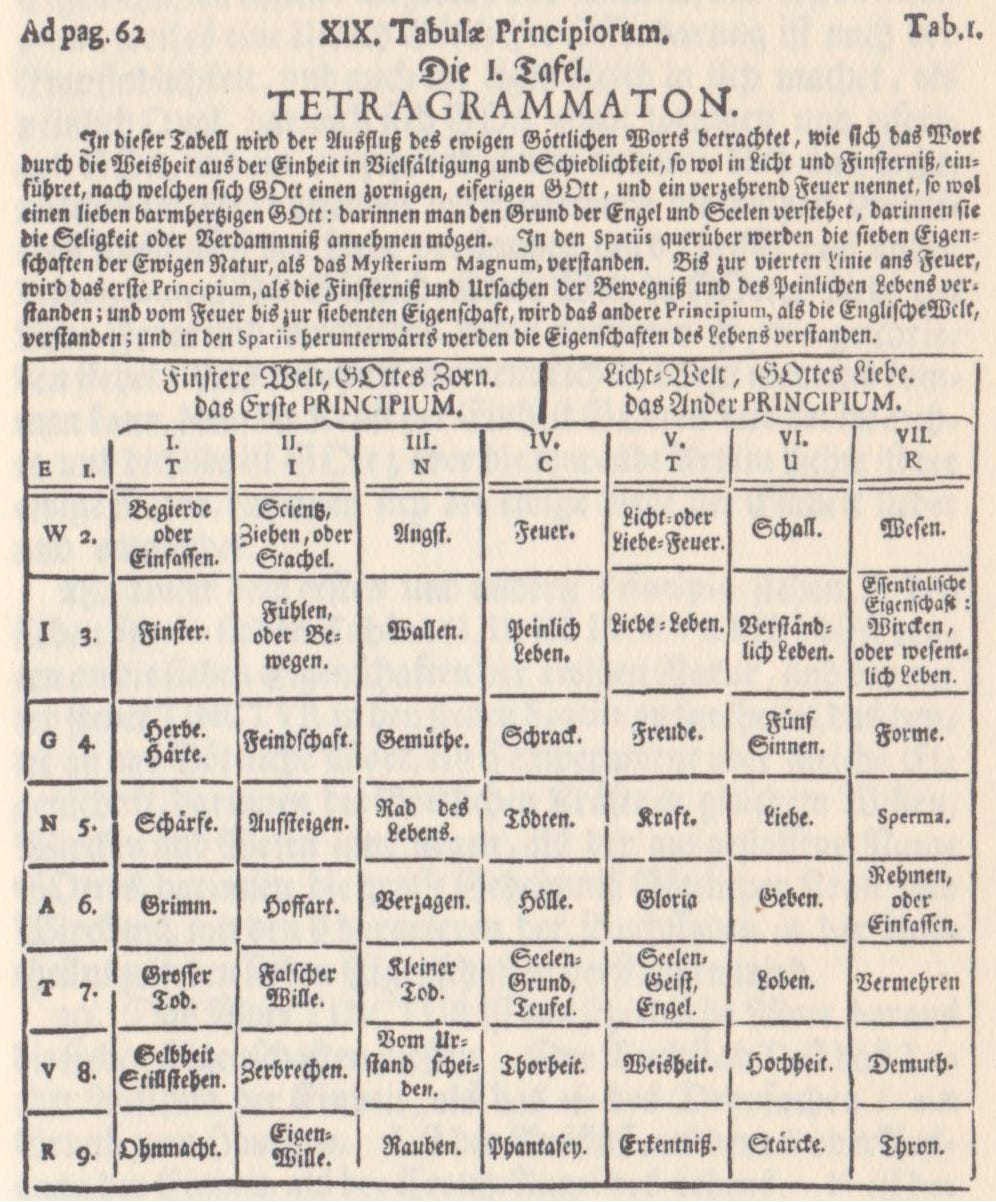
I have used words such as “transformation”, “transmutation”, and other expressions associated with change of nature, but Böhme himself denies that a nature ever fundamentally changes, rather, contents of spirit are brought out, darkness is illuminated. Relating the principle “as above so below,” to the macroscale cosmology and the microscale salvation of the individual soul, the essential nature of the person is not changed, they are still the same man they were prior to their salvation. Böhme relates it thusly:
Each of these principles is strongly defined in regard to its nature, nevertheless there is no antipathy between them. They are all rejoicing in God as one only spirit. Each loves the other, and there is nothing among them but joy and happiness. Their evolution is an eternal one and never any other.
—Jakob Böhme, Aurora, x. 51.
The higher they become exalted, and the more they become ignited, the greater will be their joy in the kingdom of light.
—Jakob Böhme, The Mysterium Magnum, v. 6.
And a commentator’s:
Thus the darkness is illumined by the light, but it never becomes light itself, nor can the light become darkness. The light shineth eternally into darkness, but the darkness comprehendeth it not.
—Franz Hartmann, The Life and Doctrine of Jacob Boehme, Ch. 3
No matter how many alchemical motifs, parallels, and analogies we observe, we must remember that Böhme himself was not an alchemist, nor did he claim to be one, stating that he has no practical knowledge of the discipline of alchemy itself. His is a uniquely and wholly a spiritual alchemy.
All in all, this is the sequential unfolding of God’s revelation and majesty, before the world’s creation and in its course. He is not confined to any one of the stages, as God arises from the Grund (which can be likened to Meister Eckhardt’s “ground of existence”) preceding anything intelligible, but the persons of the Trinity do express their particular roles in specific stages, in a sequence of 1-2-3 (the dark world) [4] 3-2-1 (the light world). In these stages is mapped out not only the unfolding of God, his birth, and the birth and rebirth of his will, but also the salvific journey of man and the course of the world. Relating all at once to God, the universe, and the heart of man. A reversal of the traditional process occurs however, a satanic inversion, inviting discord.
V. The Satanic Inversion
The seventh world, called by Böhme the “pleroma” and “the body of God,” is the birth and dwelling-place of beings of light that one can take to be the angels. The highest and mightiest of these light-beings is Lucifer. Lucifer’s will is desirous of being reborn as God’s will has, to also undergo a transmutation that will bring about a greater perfection. Lucifer, however, is born as a being of Light. God’s will, as born into a world of darkness, through its transformation was brought into a world of light. Lucifer, as a being and a will born in light, however, can only go downward. Lucifer winds up in the world of darkness out of originally being born in a world of light, a Satanic inversion comes about, whereby instead of light being brought about from dark, darkness is brought about from light.
The Godly will (typified in the seven states), by virtue of being born in the darkness, by “alchemical” rebirth comes to be reborn in the light. Lucifer, the highest of the angelic or light-beings, having been born in the light yet still desiring also that transformative rebirth that entails greater perfection and ascendancy, has his wish fulfilled, but being born in the light, he can only appear in rebirth now in the world of darkness. Satanic inversion occurs whereby the light becomes dark.
VI. The Creation and Fall of Man
God upon banishing Lucifer for the rebirth of his will into darkness, expresses his wrath, so characteristic of the first ‘contraction’. Said wrath puts the hitherto established harmonious cosmic order into turmoil, and so God seeks to mend this wound and imbalance. God thus seeks to create a perfect image of himself, and in particular an image of the light-aspects of his nature, and so he creates man. In the beginning sexless (or androgynous), with also no organs of digestion, elimination, reproduction. He partakes of the fruits of the garden but not through ingestion and excision, these features of life foreign to Adam by virtue of his presently perfect and blameless nature.
The reason for Adam’s androgyny is the fact that the feminine aspect is already contained within him and not a separate being, the feminine as wisdom personified, Sophia. Adam, when naming the animals, discovers that they are divided into sexes. Stirred by desire, he now wants for a mate as well. Being free to follow his will as ordained by God, Adam asks God for a mate, despite the lack of necessity for one. So God puts Adam to sleep, and withdraws from him a rib and creates woman, Eve. When God opens Adam’s side however, Sophia, on account of this perceived transgression (for Adam now desires an external feminine rather than the internal one already present, he abandons wisdom for desire), exits Adam in a rage.
The emergence of sexual desire was, for Böhme, the first fall of man. Later to be fully actualized in the actual expulsion from Eden after partaking of the fruit at the temptations of Satan, itself facilitated by that separation of male from female.
As God is a Lord over all, so man in the power of God was to be a lord over this world.
—Jakob Böhme, Menschwerdung, i. 4, 7.
VII. Christ and His Eternal Incarnation
In ‘The Incarnation of Jesus Christ,’ Böhme seldom speaks to the actual ministry, miracles, or even crucifixion of Jesus, but rather to his metaphysical or cosmic significance. Just as the Christian Trinity is admitted to be a mystery and no true logical and consistent analogy can be said to exist for it in view of Christian theologians, so too here is admitted something of a paradox: that an eternal, immutable, perfect Godhead moved.
His own nature had changed in the incarnation, for God is unchangeable; And yet he became what he was not. […]
There must be a great cause, because the immutable God has moved.—Jakob Böhme, MW 1; 1,1 & 1; 5,1
If we speak about heaven and the birth of the elements, we are then not telling of things that are far away or foreign to us, but of that which is taking place within our own self, and there is nothing nearer to us than this birth, for we are therein as in our own mother. If we speak of heaven, we then speak of our home, of our own country, wherein the illumined soul can see, even if that country is hidden before the eyes of the body.
—Jakob Böhme, Principles, vii. 7.
Man’s salvation and rebirth facilitated by Christ is not an isolated event, but the microcosmic reflection of the whole process of God’s will unfolding, particularly as to the earlier seven stages. As Christ first appears as a countervailing or mending force to an all-powerful wrath, he then serves as the sacrificial lamb, the subject of penal-atonement when in the mortal life of the person of Jesus of Nazareth, readied after the fulfilment of his role to send out the Spirit.
In man is contained everything, God, and the Christ, and the angels, the celestial and terrestrial kingdoms, and the powers of hell. Outside of him is nothing of which he can conceive; he can know nothing except that which exists in his mind. No god or devil, no spirit or any power whatever, can act within man unless it enters into his constitution. Only that which exists in him has existence for him.
—Franz Hartmann, The Life and Doctrine of Jacob Boehme, Ch. 3
It can be said that God’s will or purpose pursues thrice to mend the world. Firstly through the appearance of the gentle and positive counterparts to the initial whirlwinds in the world of darkness; secondly through the creation of a perfect being, man, after the wrathful exile of Lucifer from the celestial spheres; thirdly and finally, through the salvation of the world in the redemptive power of Christ.
There was no other salvation for the divine image in man unless divinity had moved according to the second principle, i.e., according to the light of eternal life, and by the power of love rekindled the substantiality (of the soul) that was imprisoned in death.
—Jakob Böhme, Menschwerdung, i., 11, 22.
Before the fall Adam received the divine light out of Jehovah; that is to say, out of the one only God, wherein was hidden the name of Jesus. But during the time of suffering when the soul fell, God manifested the treasure of His glory and holiness, and by means of the living voice of the Word He incorporated Himself with the divine fire of love into the eternal image, representing the banner of the soul, which she was to follow as a guide. But if she was not able to penetrate therein, being as one dead relatively to God, nevertheless the divine breath penetrated into her, and warned her to stop her evil activity, so that its voice might again begin to become active within the soul.
—Jakob Böhme, Grace, vii. 32.
From all eternity stood the name Jesus in immovable love in man as the image of God. But when the soul lost the light, then the Word spoke the name of Jesus into what was movable; into the faded ens of the heavenly world's substance.
—Ibid, vii. 34.
Christ serves as an instrument to awaken the divine nature within man, which then makes itself receptive to the power of the Holy Spirit. The veins of pure gold entrapped in the coarseness of a rock are Christ, the rock itself is man. The coarse exterior never becomes gold, but the whole works to kill or chip away at the coarseness, not wholly, but to continually pursue the brightening of the gold in the stone. The goal is not to become Christ, but to continually die in Christ, and for Christ to continually become human in a vessel which is worthy of him.
Even if Christ is born in us, nevertheless we cannot say, in speaking of ourselves as a whole, 'I am Christ,' for the external man is not Christ. We can only say honestly, 'I am in Christ, and Christ has become human in me.
—Jakob Böhme, Stiefel, i. 54.
We must continually die in Christ and continually kill the man of sin within us, so that the new man may live; but we cannot entirely destroy the former; we can merely keep him imprisoned, and continually pour into his fiery essence water from the mildness of God.
—Ibid, i. 63.
Likewise did the human nature of Christ die in the divine one, and the human one was never God, and the divine one come to be human in the body of Christ.
Influence and Reception
Böhme’s writings, which he would not live to see the true success of, created a following of men who shared or were influenced by his cosmological picture, coined the “Behemists” by adversaries hostile to Böhme’s legacy and thought. Foremost of Böhme’s opponents, who died prior to the shoemaker, was the chief-pastor of Görlitz, Gregorius Richter, whose own son would end up actually collecting many of Böhme’s writings and publish them in Amsterdam, in 1682. Later his full works were published for the first time in 1730, more than a century after his death. It was also Böhme who popularized the term “theosophy,” now the name of a cult established by Madam Blavatsky during the late 19th century and the subject of a book by Baron Julius Evola.
I do not write in the pagan manner, but in the theosophical.
—Jakob Böhme
William Blake, encountering a copy of the works of Böhme illustrated by Dionysius Andreas Freher, said that Michelangelo could not have surpassed these art pieces. Novalis, W. B. Yeats, John Milton, and the aforementioned Blake found inspiration in the writings of Böhme, and the German philosophers Schelling, Schopenhauer, and Hegel admired him greatly likewise, with Hegel calling Böhme “the first German philosopher.” Fittingly for Hegel, the onset for philosophy in Europe is according to him a dual-accomplishment of both Böhme and Francis Bacon,4 quite antithetical figures, mystic and scientist.
According to Feuerbach, the end of medieval philosophy was marked in an altered understanding of nature. Instead of a relatively empty nature by virtue of creation ex nihilo, nature now comes to be a manifestation of divinity too, and the divine apprehended in part through nature. This advent was, according to Feuerbach, inaugurated by the Renaissance Italian philosophers, by Jakob Böhme, and Spinoza.
The work of brining about the creation of the Philosopher’s Stone, usually through turning prima materia into the Philosophum Lapis through a process of calcinations, subliminations, fermentations, distillations, passing through nigrego, albedo, citrinitas, and the rubedo stages.
Originally known as Masāʾil Khālid li-Maryānus al-rāhib (trs. Khalid’s Questions to the Monk Maryanos).
A German Paracelsian mystic.
The man responsible for the modern scientific method.




